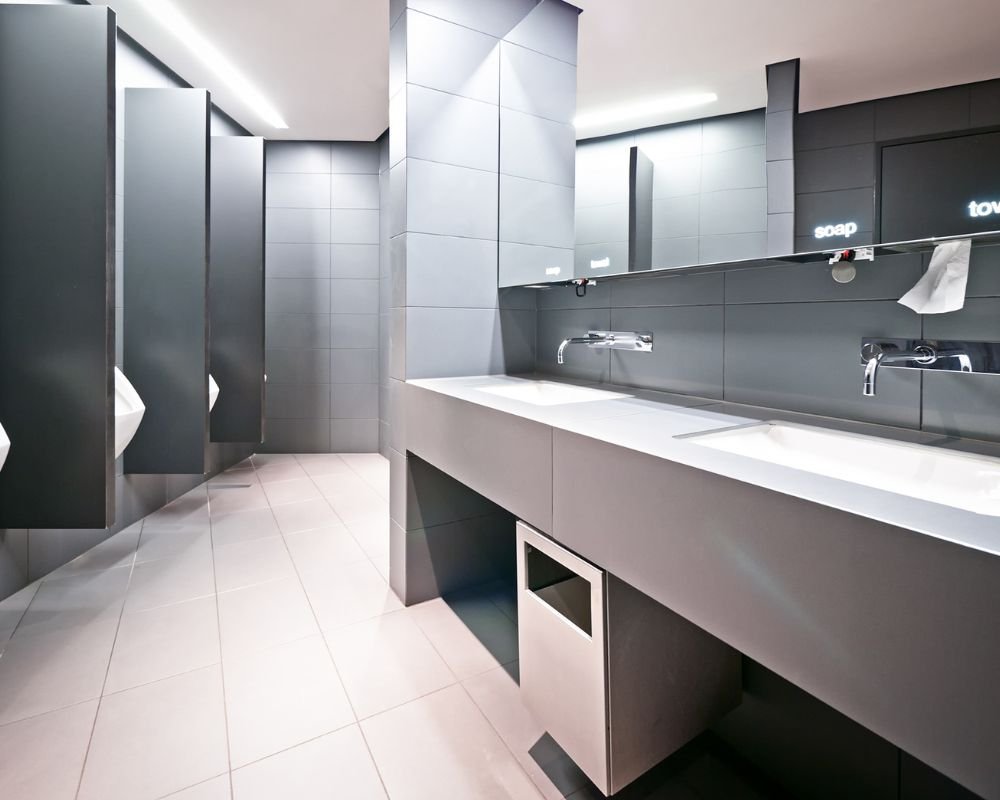Cleaning employee restrooms is not normally a big deal. Janitorial staff spot clean during the day while the night crew takes care of deep cleaning. But when it comes to public restrooms, it is a different matter entirely. Public restrooms need to be cleaned more frequently and thoroughly to ensure that a company’s reputation is not harmed.
Given that public restrooms need to be cleaned more frequently, it is more important than ever that crews be efficient. How they go about cleaning restrooms plays a crucial role. By deploying certain strategies and a step-by-step cleaning process, public restrooms can be cleaned efficiently and effectively.
Establishing a Preparation Routine
Cleaning public restrooms efficiently begins with preparation. We generally recommend establishing a preparation routine that cleaning crews follow every single time. A routine can involve many things or just a few, depending on circumstances. Examples include:
- gathering all supplies and equipment before starting.
- posting ‘wet floor’ or ‘bathroom closed’ signs as needed.
- ensuring that restrooms are well ventilated.
Establishing a preparation routine eliminates the guesswork, especially among new members of the cleaning crew. It also minimizes confusion and assumptions.
Step-By-Step Cleaning
In so many professional cleaning scenarios, efficiency boils down to process. It is our belief that following a step-by-step process that remains generally consistent day after day increases efficiency over time. That is assuming the process itself is efficient. Here is one example of a standardized process that could improve cleaning efficiency:
1. Clean High Touch Areas First
Cleaners should start with high touch areas including light switches, door handles, sink, toilets, and urinals. These high-touch surfaces should be cleaned and disinfected using a proper cleaning solution. A microfiber cloth will enhance cleaning.
2. Move On to Non-Floor Areas
After cleaning high-touch areas, move on to non-floor areas including walls, mirrors, etc. As these areas are being cleaned, they should be cleaned from top to bottom. That way, dirt and debris from higher areas falls to lower areas that have not yet been cleaned. The areas closest to the floor should be last on the list.
3. Address Floors and Trash Cans
The final step is to address the floors and trash cans. If floors need mapping, they should be done last. Cleaners should mop starting at the furthest area and move toward the door to avoid walking on cleaned areas.
Other Things to Consider
We have outlined a simple 3-step process for efficiently cleaning public restrooms – for illustrative purposes only. Your process will probably involve more steps. Above and beyond the process itself, there are other things to consider:
- Cleaning Equipment – Restroom cleaning is more efficient when the right tools are used. For example, the best tool for mopping restroom floors is almost always a traditional string mop combined with hot water and a commercial cleaning product.
- Adequate Supplies – Cleaners might want to think about replenishing their supplies before heading to the restrooms. Not having to run back and forth increases efficiency.
- Cleaning Focus – Placing a priority on areas prone to bacteria and germs should mean such areas get cleaned first. In essence, you are getting the hardest work out of the way and gradually moving to easier tasks.
- Cleaning Frequency – Public restroom cleaning can be made more efficient by increasing frequency. More frequently cleaned restrooms don’t get as dirty, meaning less work is required with each cleaning session.
Cleaning public restrooms is non-negotiable. Therefore, cleaning crews benefit when they do so as efficiently as possible. The more efficient cleaning crews are, the cleaner public restrooms tend to be. That makes everyone happier in the long run.



